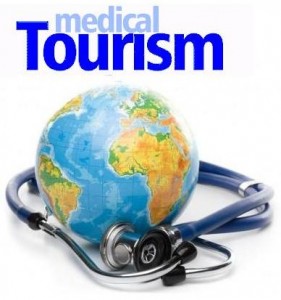 Exercise may benefit older people with dementia by improving their cognitive functioning and ability to carry out everyday activities, according to a new systematic review published in The Cochrane Library. However, the authors of the review did not see any clear effect of exercise on depression in older people with dementia and say that more evidence is needed to understand how exercise could reduce the burden on family caregivers and health systems.
Exercise may benefit older people with dementia by improving their cognitive functioning and ability to carry out everyday activities, according to a new systematic review published in The Cochrane Library. However, the authors of the review did not see any clear effect of exercise on depression in older people with dementia and say that more evidence is needed to understand how exercise could reduce the burden on family caregivers and health systems.
Due to people living longer, rates of dementia are expected to rise sharply in the coming decades. Dementia affects the brain in different ways and is associated with effects on memory and personality. It is thought that exercise might be useful in treating dementia or slowing its progression, through improvements in the ability to carry out everyday tasks and positive effects on mental processes such as memory and attention, collectively described as cognitive functioning. Exercise may therefore indirectly benefit family caregivers and the healthcare system by reducing some of the burden of dementia.
The study updates a Cochrane review carried out in 2008, when only four trials on the effects of exercise in older people with dementia were available. In the updated review, data from eight trials involving 329 people showed that exercise could improve cognitive functioning. Data from six studies involving 289 people showed that exercise could improve the ability of older people with dementia to carry out daily activities, such as walking short distances or getting up from a chair.
“In our previous review, we were unable to draw any conclusions about the effectiveness of exercise in older people with dementia, due to a shortage of appropriate trials,” said researcher, Dorothy Forbes, an Associate Professor of Nursing who works at the University of Alberta in Edmonton, Alberta. “Following this new review, we are now able to conclude that there is promising evidence for exercise programs improving cognition and the ability to carry out daily activities. However, we do still need to be cautious about how we interpret these findings.”
The researchers remain cautious because there were substantial differences among the results of individual trials. In addition, they did not find enough evidence to determine whether exercise improved challenging behaviours or depression in older people with dementia. They were unable to come to any conclusions regarding quality of life, or benefits for family caregivers and health systems, because there was not enough evidence.
However, the researchers suggest that if more evidence becomes available in future, it may help to address the question of whether exercise can help people with dementia remain at home for longer. “Clearly, further research is needed to be able to develop best practice guidelines to enable healthcare providers to advise people with dementia living at home or in institutions,” said Forbes. “We also need to understand what level and intensity of exercise is beneficial for someone with dementia.”
Source: Red orbit



 Frito-Lay has just introduced “Cheetos! Cream stew” that is meant to taste like cream stew, a traditional Japanese meal that contains beef, vegetables and other stock ingredients, according to the website for Japan Frito-Lay Ltd..
Frito-Lay has just introduced “Cheetos! Cream stew” that is meant to taste like cream stew, a traditional Japanese meal that contains beef, vegetables and other stock ingredients, according to the website for Japan Frito-Lay Ltd.. Federal health regulators are warning the public that certain cardiac defibrillators recalled by Philips Healthcare may fail to deliver a needed shock in an emergency.
Federal health regulators are warning the public that certain cardiac defibrillators recalled by Philips Healthcare may fail to deliver a needed shock in an emergency.
 The National President of the Association of Medical Laboratory Scientist of Nigeria, AMLSN, Dr Godswill Okara has disclosed that Nigeria spends N 150 billion annually on medical tourism due to the fact that the larger proportion of Nigerians have lost confidence on the health sector in the country.
The National President of the Association of Medical Laboratory Scientist of Nigeria, AMLSN, Dr Godswill Okara has disclosed that Nigeria spends N 150 billion annually on medical tourism due to the fact that the larger proportion of Nigerians have lost confidence on the health sector in the country. UAB Medicine, in collaboration with BroadcastMed, Inc. has launched MD Learning Channel, an online resource that enables medical professionals worldwide to tap into the knowledge and expertise of University of Alabama at Birmingham physicians.
UAB Medicine, in collaboration with BroadcastMed, Inc. has launched MD Learning Channel, an online resource that enables medical professionals worldwide to tap into the knowledge and expertise of University of Alabama at Birmingham physicians. Load Up on ‘Super Foods’, Find Time to Exercise, Consider Breastfeeding to Help Shed Excess Pounds
Load Up on ‘Super Foods’, Find Time to Exercise, Consider Breastfeeding to Help Shed Excess Pounds